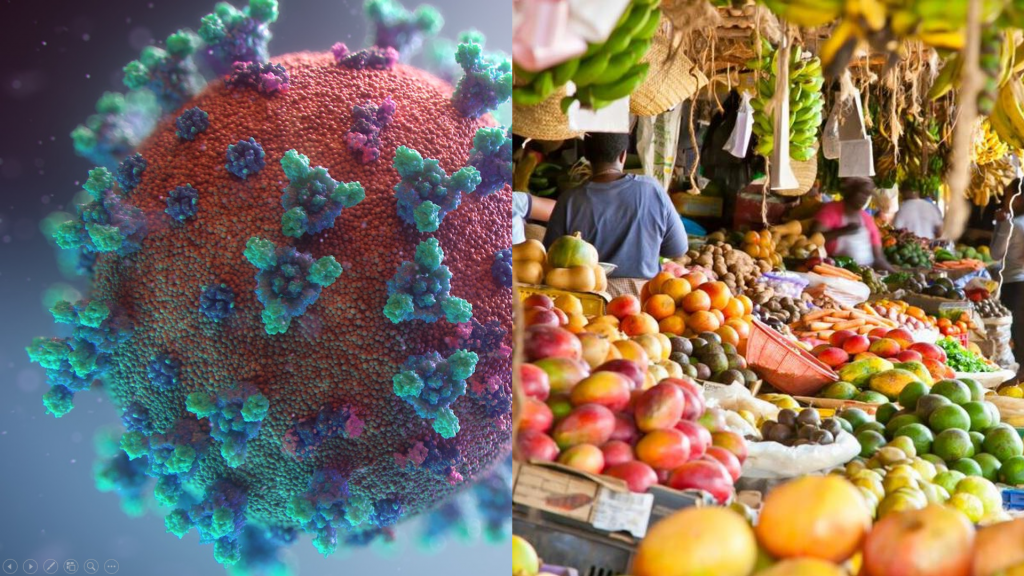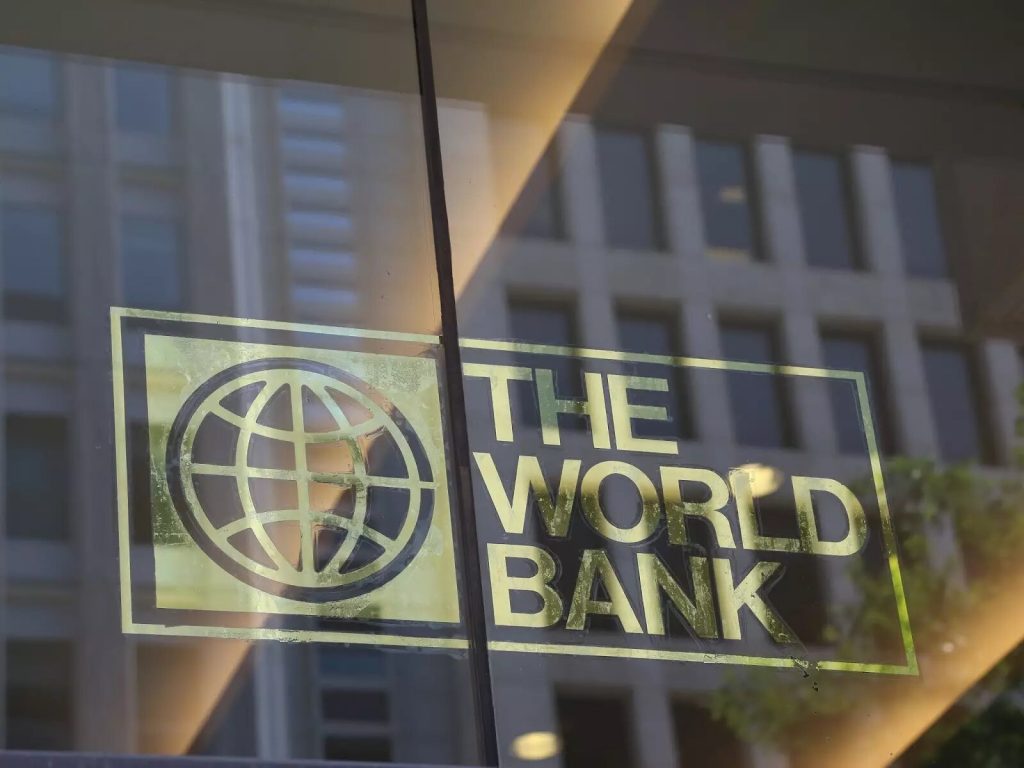Food Security and COVID-19
Alarmed by a potential rise in food insecurity during the COVID-19 pandemic, many countries and organizations are mounting special efforts to keep agriculture safely running as an essential business, markets well supplied in affordable and nutritious food, and consumers still able to access and purchase food despite movement restrictions and income losses.

This page summarizes the evolving agriculture and food situation and provides links to World Bank and other resources. Updates are frequently posted on this page.
Overview
Global agricultural markets continue to remain stable as food trade has remained more resilient than overall trade. Global production levels for the three most widely consumed staples (rice, wheat and maize) are at or near all-time highs. However, the prices of certain cash crops — an important source of rural income — have been depressed by the slowing of global demand.
Given the status of global food supplies, export restrictions are unwarranted and could hurt food security in importing countries. The World Bank has joined other organizations in calling for collective action to keep food trade flowing between countries.
The primary risks to food security are at the country level: as the coronavirus crisis unfolds, disruptions in domestic food supply chains, other shocks affecting food production, and loss of incomes and remittances are creating strong tensions and food security risks in many countries. The United Nations World Food Programme has warned that an estimated 265 million people could face acute food insecurity by the end of 2020, up from 135 million people before the crisis, because of income and remittance losses.
Food producers also face large losses on perishable and nutritious food as buyers have become limited and consumption patterns shift. Though food insecurity is by and large not driven by food shortages, disruptions to the supply of agricultural inputs such as fertilizers, seeds or labor shortages could diminish next season’s crop. If farmers are experiencing acute hunger, they may also prioritize buying food today over planting seeds for tomorrow, raising the threat of food shortages later on.
Food security “hot spots” include:
- fragile and conflict-affected states, where logistics and distribution are difficult even without morbidity and social distancing.
- countries affected by multiple crises resulting from more frequent extreme weather events (floods, droughts) and pests such as the current locusts plague – the worst in decades— impacting food production in 23 countries.
- the poor and vulnerable, including the more than 820 million people who were already chronically food insecure before the COVID-19 crisis impacted movement and incomes.
- countries with significant currency depreciation, (driving up the cost of food imports) and countries seeing other commodity prices collapse (reducing their capacity to import food).
World Bank support
At the country level, the World Bank Group is working with governments and international partners to closely monitor domestic food and agricultural supply chains, track how the loss of employment and income is impacting people’s ability to buy food and ensure that food systems continue to function despite COVID-19 challenges.

We’re building on existing projects and deploying short and long-term financing. Examples:
- In Angola, the World Bank-financed Commercial Agriculture Development Project is helping farmer cooperatives and small and mid-sized agricultural enterprises expand and improve their operations to meet the needs of local communities during the pandemic.
- In Bangladesh, a $96 million Emergency Action Plan, mobilized as part of a Livestock Dairy Development project will include cash transfers to vulnerable dairy and poultry farmers for business continuation.
- In Bhutan, the World Bank has re-aligned its portfolio to support food distribution in the short term and enhance food production in the medium term through inputs supply and irrigation.
- In the Democratic Republic of Congo, we’re supporting the government, in conjunction with the World Food Programme, to improve the frequency and quality of food price and stock data, in particular around main urban consumption centers affected by COVID-19, to help plan for appropriate social protection, food and nutrition interventions and emergency response to food price hikes.
- In Haiti, the Resilient Productive Landscape project is mobilizing emergency funding to benefit 21,500 family farmers to safeguard production for the next two cropping seasons, given that a reduction in remittances (estimated at 35% of GDP, prior to COVID-19) will affect the capacities of farmers to finance production costs. The financing will cover: (i) seeds, fertilizers, support to land preparation through plowing; (ii) small works respecting social distancing, including rehabilitation and cleaning of irrigation schemes; and (iii) communications campaigns to promote social distancing and personal sanitation and the application of mitigation measures against the pandemic to properly implement field activities. Implementation arrangements include the use of vouchers or cheques — a mechanism that was used successfully following Hurricane Matthew in 2016.
- In India, women’s self-help groups, supported under the National Rural Livelihoods Mission co-financed by the World Bank, mobilized to meet shortages in masks and sanitizers, run community kitchens and restore fresh food supplies, provide food and support to vulnerable and high-risk families, provide financial services in rural areas, and disseminate COVID-19 advisories among rural communities. These self-help groups, built over a period of 15 years, tap the skills of about 62 million women across India.
- In Kenya, we’re looking at leveraging digital technologies through ongoing partnerships with 15 AgTech startups to transform the delivery of inputs, soil testing, crop insurance, credit, extension advice and market linkages, to enable farmers to overcome temporary COVID-related constraints and ensure better targeting and more effective service delivery especially in remote areas in the long run.
- In the Kyrgyz Republic, the World Bank supported, GAFSP-funded Agricultural Productivity and Nutrition Improvement Project, which focuses primarily on improving water infrastructure and developing the capacity of water users associations (WUAs), will begin distributing agricultural inputs such as seeds and fertilizer through 30 project WUAs to address vulnerable populations.
- In Liberia, we’re working with the government to ensure food supply chains are sustained. Although disruptions in the food supply chain are still minimal, logistical challenges are emerging. The Bank is responding by fast tracking certain activities and activating a Contingency Emergency Response Component (about $7.5 million) through Smallholder Agriculture Transformation and Agribusiness Revitalization Project (STAR-P) so the government can meet immediate food needs of vulnerable people, keep domestic supply chains moving, and support smallholder farmers to increase food production.
- In Pakistan, more than 18,000 mainly female-headed households will receive direct livelihood support through World Bank-financed projects to develop kitchen gardens, small scale livestock and agricultural activities.
- In Rwanda, the Sustainable Agricultural Intensification and Food Security Project will provide support to help maintain current levels of exports and to support cooperatives of horticulture growers to meet increased airfreight and other logistics costs due to COVID-19 lockdowns.
- In Senegal, a $150 million IDA credit will help increase exports of high-value crops such as shelled groundnuts and horticultural products, increase dairy farming productivity, and reduce the mortality rate of small ruminants, mitigating the negative impacts of the pandemic while investing in more productive and resilient practices.
- In Sierra Leone, emergency financing under the ongoing Smallholder Commercialization and Agribusiness Development Project will support government COVID-19 response initiatives with inputs, land mechanization services, as well as extension services to support rice farmers. The World Bank-financed Social Safety Net Project is also scaling up its cash transfer system to provide support to the most vulnerable households.
- In Tajikistan, the existing Targeted Social Assistance system will provide time-bound cash transfers to food-insecure households with children under the age of 2 to mitigate the effects of increases in food prices and to protect children’s nutrition.
We’re working with countries to help them adopt appropriate food policy responses. These include:
- treating food as an ‘essential service’ to keep food moving and opening special procedures (‘green channels’) for food, trade and agricultural inputs to ensure supply chains are kept open and functional.
- incorporating necessary health and safety measures along segments of the food supply chain.
- supporting the most vulnerable populations via safety net programs, complemented by food distributions in areas where supply chains are severely disrupted.
Locusts
We’re also working with partners in the United Nations and national governments to deliver immediate and long-term support to respond to a crisis-within-a crisis: the worst locust outbreak in decades. Our support will help hard-hit farmers and rural communities control locust swarms, withstand the dual crises of COVID19 and locusts, and get money into people’s pockets and equipment into farmers hands to recover, including through cash transfers, seed and fodder packages and other social safety nets.
Prevention
We’re committed to helping countries prevent the next disease from emerging and be better prepared when risks materialize.
World Bank experience with the Avian Influenza shows that cross-sectoral, coordinated investments in human, environmental and animal health (“One Health” approach) are a cost-effective way to manage risks and control diseases at the source. Over 70% of emerging infectious diseases (EID) in humans have their source in animals. Transmission of pathogens from animals to humans and EIDs are increasing in a rapidly changing environment, with deforestation, land-use change and rapid population growth amplifying the exposure of humans to diseases carried by animals.
Under the first COVID-19 package of World Bank Group financing, countries are able to invest in longer-term prevention, such as strengthened veterinary services, disease surveillance and food safety. In India, for example, the COVID-19 Emergency Response and Health Systems Preparedness Project will improve disease surveillance systems in humans and animals and health information systems across the country. In China, a new project will improve risk-based surveillance systems for zoonotic and other emerging health threats, strengthen the capacity for risk assessment and diagnosis and monitoring networks for human, animal and wildlife diseases, and improve protocols for information sharing between relevant agencies.



